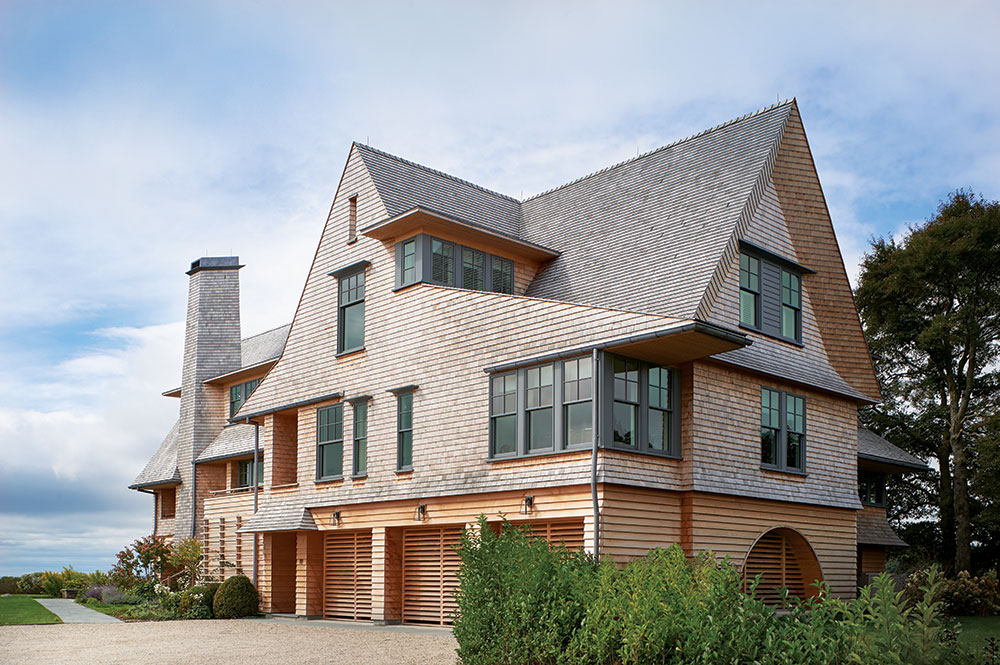If the mastery of a great ocean home is measured by its sense of anticipation, this exceptional vacation retreat in the coastal enclave of Watch Hill, Rhode Island, succeeds on every level.
A picturesque gravel driveway sets the scene, leading down a low-lying, rocky peninsula jutting out into the Atlantic Ocean like the prow of a ship.
Seagulls whirl and squawk overhead; the air is tangy with sea spray; and a breeze carries the sound of water across the bay, a secluded cove and neighboring salt marsh
An open motor court welcomes family, guests and visitors alike, guiding them either to striking louvered cedar garage doors or a more formal front entrance reached via a wooden stairway.
And towering above is a handsome three-story home, designed in the classic New England Shingle vernacular but exuding a confident and commanding character that strikes the perfect balance between modernity and tradition.
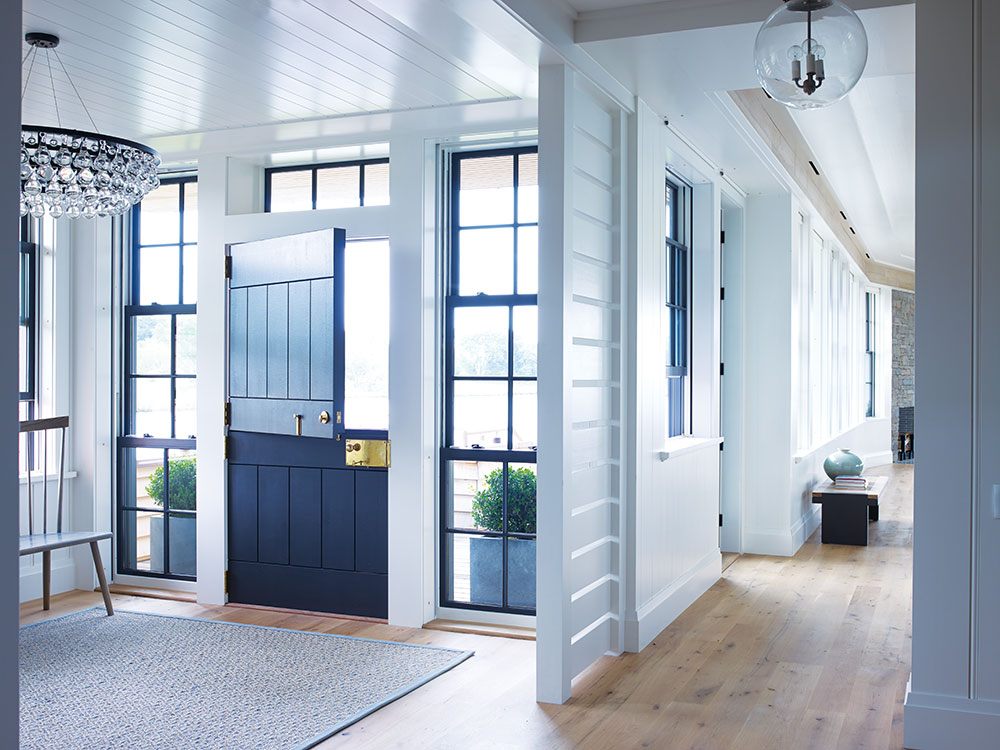

The seven-bedroom, five-bath residence is a masterwork by Thomas A. Kligerman, cofounder and principal of Ike Kligerman Barkley, one of Ocean Home’s Top Coastal Architects of 2016.
The storied and multi-award-winning firm, with offices in New York City and San Francisco, designs stellar homes across America and beyond, but this particular commission held a personal attraction for Kligerman.
“Ever since I was 10 years old, I have spent summers just five miles down the road in the small ocean-side town of Weekapaug, set on a coastline dotted with simple shingled cottages,” he says.
“I also sail traditional wooden boats, and my visceral attachment to the Shingle style is inherently braided with that summer activity. The link between the two is wood and paint; the aromas of each combine with the salt and air, and I wanted to capture that in this house.”
The initial commission followed a chance meeting. “About 12 years ago, I took a cab to the airport and the driver said he had to pick up someone else along the way,” Kligerman recalls.
“We stopped at a beautiful house, a man got in the cab and we had an hour chatting together. About six or seven years later, I received a letter: ‘Dear Tom, you may not remember me, but we met in a taxi and we’re thinking of designing a vacation home…’ ”
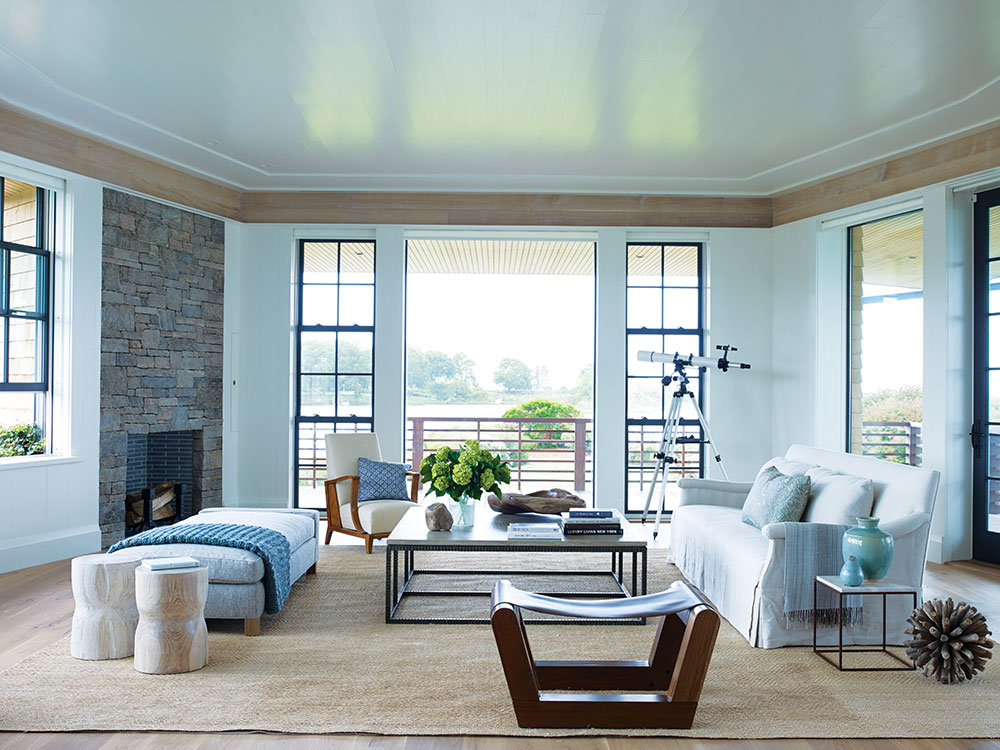

Kligerman remembered instantly and, despite being in competition with other leading architects for the job, he submitted an impressive design concept that won him the commission.
The clients originally requested a modern flat-roof house, but Kligerman felt an overly contemporary home might not be welcome in a community that prizes historic architecture, especially on such a prominent site.
Together, architect and clients agreed on a concept that would embody both modernity and tradition.
Early design challenges – including the original home’s footprint, which could not be altered, along with stringent FEMA flood zone regulations – informed Kligerman’s plan.
“We had to stay within the fixed footprint, and the house had to be elevated 15 feet so if there is ever a hurricane, water can easily pass through it,” he says.
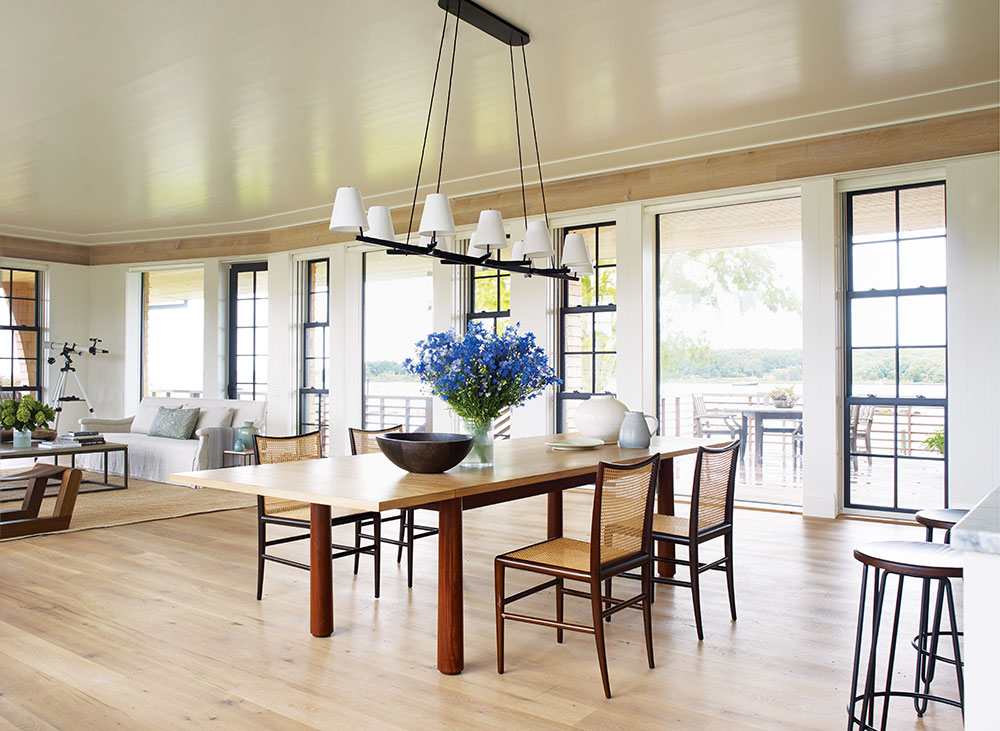

The solution was to go up in height to three levels, with a garage and recreation and storage space on the first floor and living rooms and bedrooms on the second and third floors respectively.
And rather than create a frame and add architectural elements, with the potential to overstep the fixed footprint, Kligerman decided to start with a cube shape and cut into it.
“Imagine a sculptor looking at a block of marble, and somewhere in there is a statue, and everything we could take away from that block is what the house would be. We were effectively working in the negative,” he says.
“As we cut away, the edges of the cube became the edges of the building. We were really scooping and carving away to create the shape of the house,” he adds.
Drawing further inspiration from the crisp geometry of origami – almost as if he had taken a sheet of paper and folded it into sharply articulated planes – Kligerman gave the house its unique character.
“It proved especially effective up above where the elongated dormers and extended overhangs are recognizably traditional, yet enabled me to translate my client’s original desire for a flat roof into moments of horizontality,” he says.
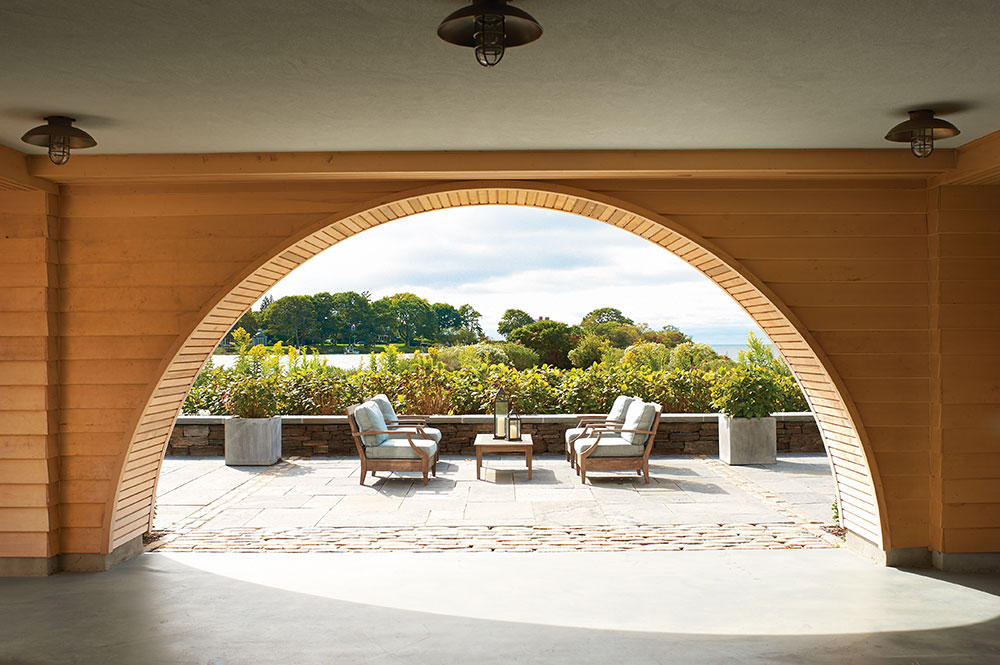

“The concept also freed me to eliminate all moldings, trim and ornament, resulting in pure volumes bordering in places on the abstract,” he adds.
Kligerman “carved” into the flat gables on both ends of the building, shaping distinctive prism-like edges inside the triangular forms.
He also gave the house a high roofline in proportion to a three-story building, even though only two of the floors are habitable.
“When you drive into the motor court, the house almost feels like it’s about to pull away, with its grand entry stair like a gangplank, its big smokestack chimney and a nose that’s gesturing toward the ocean,” says Kligerman.
“It’s a sense of potential, rather than a sense of arrival, like a great adventure is about to begin,” he adds.
If the home’s exterior is more classical in style, the interior design is all about contemporary living, infused with maritime-inspired details and décor to enhance the experience of being at the water’s edge.
A Dutch door at the top of the entry stair opens to a light and airy entrance hall and a switchback staircase connecting all three levels of the home.
Set against all-white walls and ceilings, the staircase is painted a boat-deck gray and designed with open planks rather than traditional balustrades, setting the tone for the breezy beach house vibe.
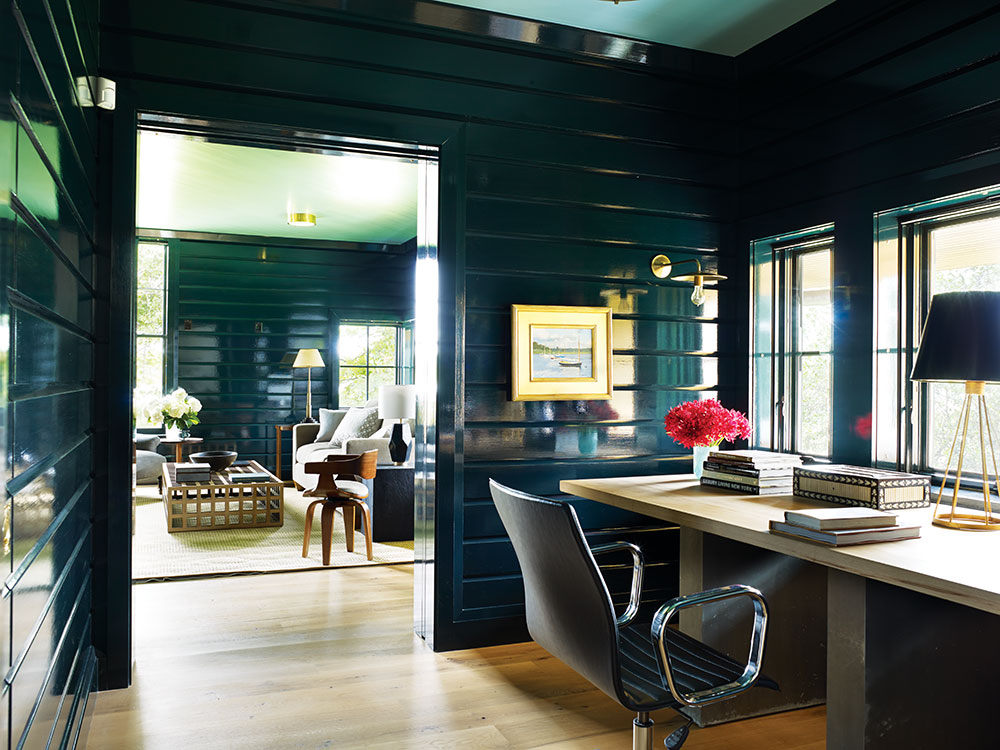

The staircase opens on the second floor to an expansive great room, comprising open-plan kitchen, dining and living spaces, with a study and den and two guest bedrooms off to the side.
Triple-hung, floor-to-ceiling windows allow natural light to flood into the great room on all three sides and deliver spectacular views of the salt marsh, bay and ocean beyond.
The windows also open to three separate porches and decks, each designed to offer different outdoor entertaining and relaxation spaces depending on the time of day and weather conditions.
One porch is open to the elements, delivering full sun by day and star-filled skies at night; another has an overhang in the event of rain, while the third porch is screened, offering a practical all-weather environment.
While Ike Kligerman Barkley has an interiors department, Kligerman enlisted leading Boston-based designer Heather Wells, who opted for soft and subtle colors, textures and fabrics to complement the ever-changing hues of the surrounding seascape.
Reclaimed oak plank floors, sanded and lightly bleached; a sisal rug; stone fireplace; and a color palette inspired by sand, dune, driftwood and beach all add to the relaxed and casual coastal ambience.
The adjoining den and study offer a major element of surprise, with high-gloss, black-green walls standing in sharp contrast to the stark whiteness of the great room.
“The dark color offers a sense of intimacy, completely different to anything else in the house,” says Kligerman. “I also wanted it to look like the hull of a beautiful sloop, so it has a kind of nautical feel.”
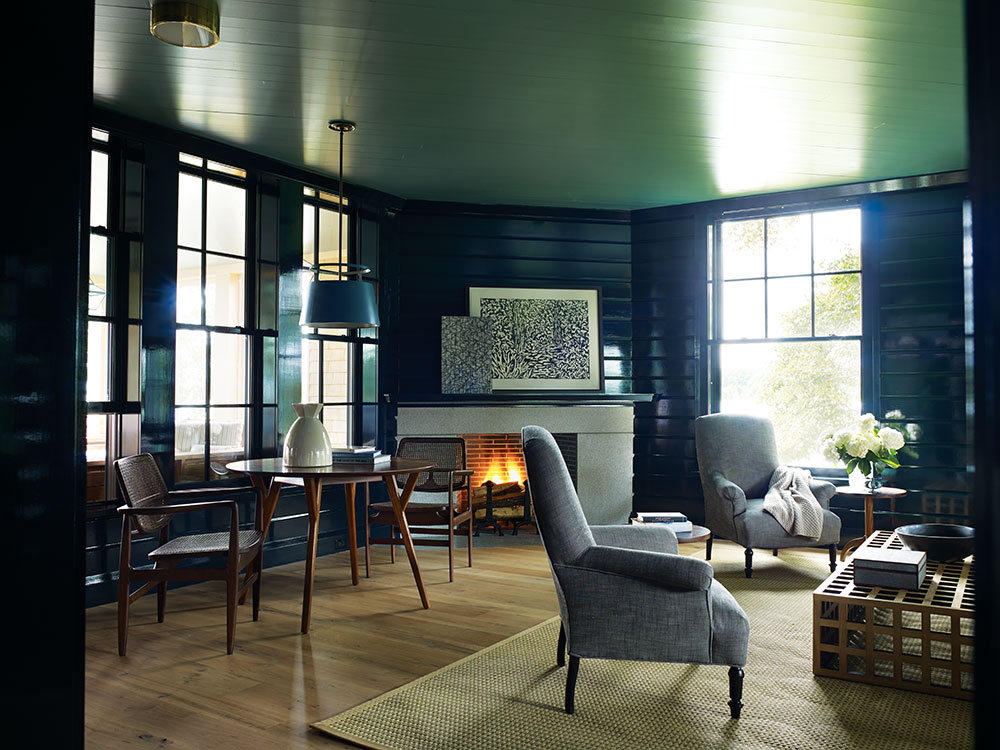

The third floor comprises the family accommodations: separate bedrooms for the three children – an en suite for the daughter, a shared bathroom for the two sons – and a bunkroom with its own bathroom.
A long, narrow hallway with windows and shutters on each side leads to the owners’ suite, designed with three exposures facing east, south and west. The master bedroom points directly toward the ocean with a private porch to enjoy the panoramic water views.
Kligerman’s masterful touches are everywhere. All window sashes are painted black, providing a graphic element and allowing a sharper view of the ocean and coastline.
The louvered cedar doors of the three-car garage are designed to resemble lattice, while the adjoining first-floor space doubles as an indoor/outdoor recreation room with ping-pong and billiards tables and storage for sailboats and surfboards.
“And water can wash right through that space in the event of a storm,” says Kligerman.
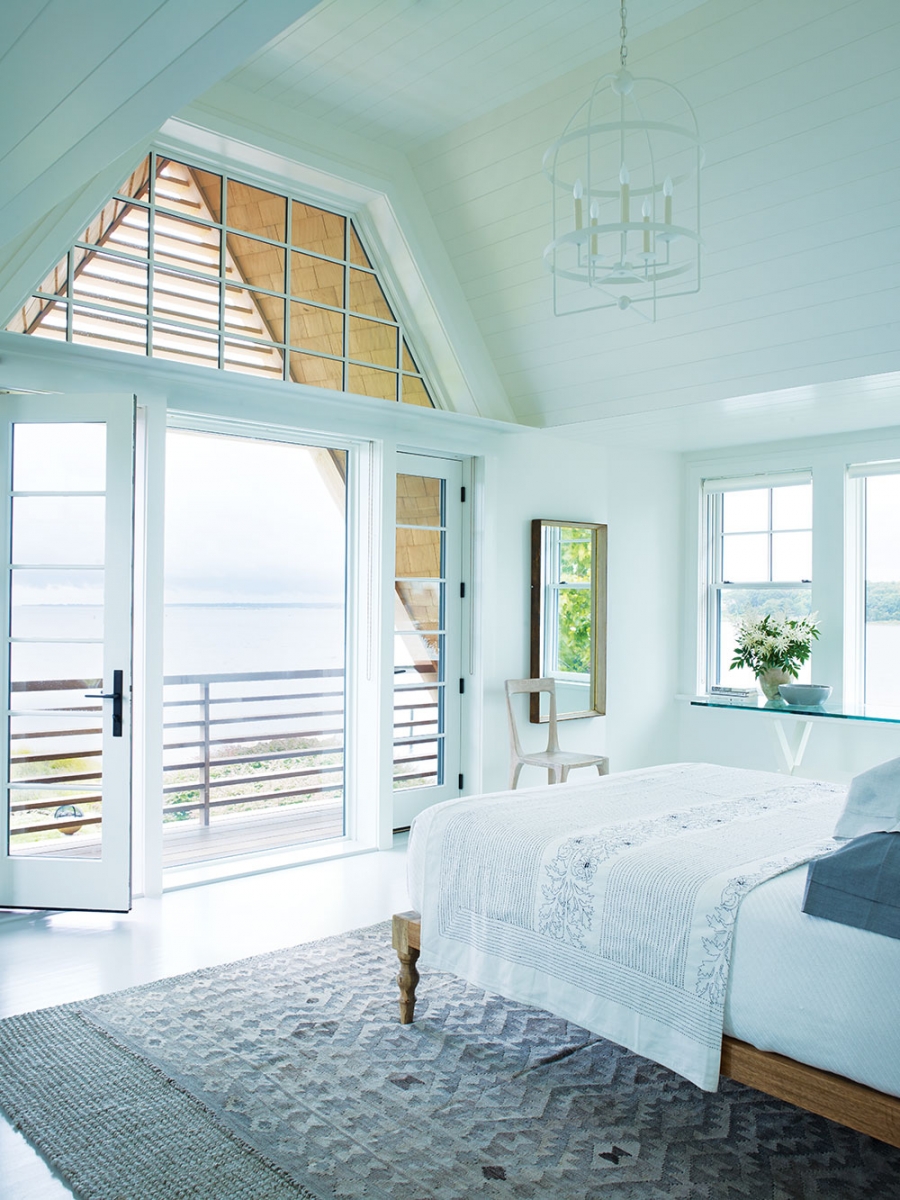

Architect and clients worked closely throughout the three-year project from 2011 to 2014. “We discussed every minutiae,” says Kligerman. “If everyone involved – architect, builder, interior designer and clients – are happy, that’s a successful project.”
A graduate of Columbia University and Yale School of Architecture, Kligerman worked for the great Robert A.M. Stern before cofounding his own firm with college friend and fellow architect John Ike in 1989 (co-principal Joel Barkley joined 10 years later). “I owe a lot of what I do to Robert Stern,” says Kligerman.
But it’s his lifelong passion for the ocean, not to mention his abiding love of Shingle style, which informs much of his design aesthetic and results in exceptional homes.
“The ocean is in my blood,” he says. “The air and light, the views, smells and sounds are unique, engaging every sense. The rhythm of the water is like being rocked in a cradle; it’s like a heartbeat, it’s so organic.”
For more information, visit ikekligermanbarkley.com.
Image Credits: Photos by William Waldron.


